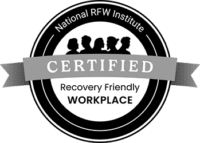Top 3 Challenges for Medicaid Patients in Care Accessibility and Provider Engagement
Medicaid, by design, is meant to help individuals who lack traditional means to access full-service private insurance plans, whether it’s older adults whose Medicare plans don’t go far enough to serve their unique care needs or younger individuals on a fixed income or living below the poverty line who find care to be cost-prohibitive. It stands to reason that these populations would face inherent challenges related to cost, accessibility, and provider engagement when they get sick; however, these are only a few of the challenges faced by Medicaid patients.
Medicaid accounted for over 18 percent of healthcare cost expenditures in 2020 and over 17 percent of the US population is covered by the program with over 78 million total people projected to be enrolled in 2022. For these reasons and others, it’s imperative that we understand the barriers that Medicaid patients face in their daily and long-term care journey. Medicaid can safely be considered America’s public health insurance program, the mechanisms and benefits of which should continue to evolve over time with cultural shifts as it always has. This evolution begins with knowing what patients need in healthcare.
While each state’s Medicaid offerings will vary, based on population, budget, and other factors, there are several fundamental challenges that Medicaid recipients throughout the country continue to face, which include:
There are clear racial and cultural disparities in Medicaid programs, from state to state, as many state programs refuse to expand coverage, causing more people of color to fall through the increasingly large coverage expansion gap.
1. Confusing and Problematic Enrollment for Vulnerable Populations
Initial enrollment and eligibility verification can be challenging. As previously stated, each state has their own requirements and system, which leads to a fragmented level of engagement and information delivery, which can be hard for patients who don’t speak English or have a generally lower level of health literacy based on developmental needs and socioeconomic background. Data from the Center for Healthcare Strategy indicates that 36 percent of adults in the U.S. have low health literacy, with disproportionate rates found among lower-income Americans eligible for Medicaid. Making enrollment and eligibility requirements easy to understand is key to boosting enrollment and helping more people.
2. Overall Care Quality Differential
While Medicaid is a vital part of the American healthcare ecosystem and has helped millions of people in the United States preserve health and quality of life, there’s no question options under the program are limited. The program reimburses only a comparatively small group of providers, and often falls short of adequate coverage for specialists. Ironically, it’s often Medicaid recipients who need this specialized level of care the most.
For example, data from a joint university study indicates that racial and ethnic minorities are 1.5 to 2.0 times more likely than whites to have most of the major chronic disease, and these conditions are also more common among lower-income populations. There are clear racial and cultural disparities in Medicaid programs, from state to state, as many state programs refuse to expand coverage, causing more people of color to fall through the increasingly large coverage expansion gap.
3. Access to Care for Elderly Patients
Elderly patients make up a considerable portion of the nation’s population of Medicaid recipients. Data from the Center on Budget and Policy Priorities indicates that over 8.5 million Americans age 50-64 get health coverage through Medicaid. This is a population that can’t afford to experience longer wait times that have become unfortunately common in Medicaid care delivery. Additionally, states are now authorized to impose work requirements on adult Medicaid enrollees under 65. These requirements have already led to loss of coverage for thousands of recipients across multiple states. This policy can be characterized as contrary to the spirit of Medicaid, as many who are working are covered by private insurance provided by their employer.
4. Empowering Medicaid Patients and Reducing Hospital Costs through Consistent Engagement
Like other care providers, those reimbursed by Medicaid have a hard time connecting with patients beyond the traditional office visit. Doctors are less inclined to accept Medicaid patients to begin with, especially in states like New Jersey, and patients often spend less time overall engaging in face-to-face interaction with their care providers.
Medicare providers can leverage digital therapeutics to extend the point of care and guide patients toward become active agents of their own condition management. GoMo Health is helping more and more Medicaid-reimbursed providers better connect with patients, reduce treatment costs, improve care outcomes and improve health literacy through digital therapeutics.







Find Us Online